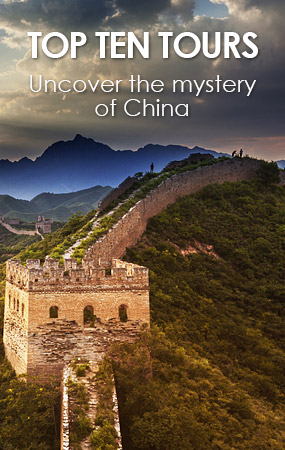Imperial Garden
Outside of the Gate of Terrestrial Tranquility is Yuhuayuan, the Imperial Garden, which was built in 1417 in the Ming dynasty. The rectangular garden covers an area of about 12,000 square meters and was the private garden of the imperial family. It was the most typical imperial garden in China. There are about 20 structures, of different styles. One will be astonished that structures can keep harmony with trees, rockeries, flowerbeds and bronze incense burners in such a small space.
Qin'andian, the Hall of Imperial Peace is the main structure in the garden and the only one on the central axis and stands in the center of the garden, encircled in a rectangular wall. It was first built in the 15th century. In front of the hall, there is a 400 years old consort pine, symbolizing harmony of the emperor and the empress. Two gilded unicorns, supposed to protect the hall from evil spirits, guard the door. Inside the hall, Zhenwudadi, God of Water in the Taoism, was worshiped, since he was supposed to protect the Forbidden City from fire.
On the four corners of the garden, there is one pavilion at each, symbolizing the four seasons respectively. The Pavilion of Myriad Springs is the most famous one and lies in the east corner of the garden. It was built in 1535 and restored during the Qing dynasty. This pavilion symbolizes the spring, and undoubtedly, there are also three other pavilions which represent the summer, autumn and winter respectively.
Duixiushan, Gathering Beauty Hill is a little artificial mountain with a cave. It is located in the northeast. Yujingyuan (Pavilion of Imperial View) sits on top of the mountain. Emperors would climb up to the pavilion on the Double Ninth Festival to enjoy the scenery with the royal family.
In the garden, visitors will find some footpaths paved with colorful pebbles, which form different patterns, usually symbolizing luck and fortune. However, careful visitors may see a group of pictures depicting shrews punishing their husbands. It is very confused that such pictures would appear in the imperial garden in feudal China when androcentrism and emperorcentrism were dominant.
The north end of the garden is Shenwumen, the Gate of Devine Might and the rear gate of the Forbidden City.
Did you reach all the sites east and west side of the Inner Court? If yes, you may exit from the Gate of Devine Might.

